Understanding the Need for Roof Inspections
Roof inspections are critical for maintaining the health and longevity of your roof. These inspections involve a thorough examination of your roof to identify any issues that may lead to more significant problems if left unaddressed. Regular inspections can save homeowners thousands of dollars in repairs down the line. Noticing small problems early can prevent major leaks and structural damage, ensuring your roof remains reliable and efficient.
Benefits of Regular Roof Inspections
Early Detection of Roof Issues
One of the primary benefits of roof inspections is the early detection of potential problems. During an inspection, roofing professionals can identify issues like broken shingles, mold growth, and signs of water damage. By addressing these problems promptly, homeowners can avoid costly repairs or even roof replacement.
Maintaining Property Value
A well-maintained roof contributes to the overall value of your property. Regular inspections help ensure that your roof remains in good condition, which is essential if you plan to sell your home in the future. Potential buyers are more likely to feel confident in a property with a documented history of regular maintenance.
Insurance Benefits
Some insurance companies may require proof of regular roof inspections to maintain your coverage. If a roof is poorly maintained and causes damage, insurers might deny claims, leaving homeowners responsible for repair costs. Regular inspections can help ensure compliance with insurance requirements and protect your investment.
What to Expect During a Roof Inspection
During a roof inspection, professional roofers will assess various components of your roof. They will examine shingles, flashing, gutters, and drainage systems to identify any signs of wear or damage. Expect them to take detailed notes and pictures to document any findings. If any repairs are necessary, your roofing contractor will provide recommendations on the best course of action.
How Often Should You Schedule Inspections?
It is generally recommended to schedule roof inspections at least twice a year, ideally in the spring and fall. However, if your area experiences severe weather conditions like heavy rain, hail, or strong winds, consider scheduling additional inspections to assess any potential damage.
DIY Roof Inspection Tips
What Homeowners Can Do
While hiring a professional for a thorough inspection is essential, homeowners can perform basic visual inspections themselves. Look for missing or damaged shingles, check for granule loss in gutters, and ensure that downspouts are free of debris. If you notice any damage or if you feel unsafe climbing on your roof, contact a professional roofing contractor for assistance.
Checklist for DIY Inspections
- Inspect shingles for cracks or missing pieces
- Check gutters for debris and clogs
- Examine flashing around vents and chimneys
- Look for signs of water damage or stains on ceilings
- Ensure ventilation is adequate in the attic
Choosing the Right Roofing Contractor
Selecting a trustworthy roofing contractor is essential for successful roof inspections. Look for licensed and insured professionals with positive reviews and a strong reputation in your area. Ask for references and check their previous work to ensure you are making the right choice. Regular inspections from a qualified roofing contractor can lead to a longer-lasting and more reliable roof.
Conclusion
Regular roof inspections are a vital aspect of home maintenance that can save homeowners money, enhance property value, and ensure a safe living environment. By prioritizing roof health, you invest in your home’s future, preventing unexpected issues and maintaining peace of mind. Schedule a roof inspection today to keep your roof in optimal condition and protect your home from the elements.
Source: Roofer Resources

